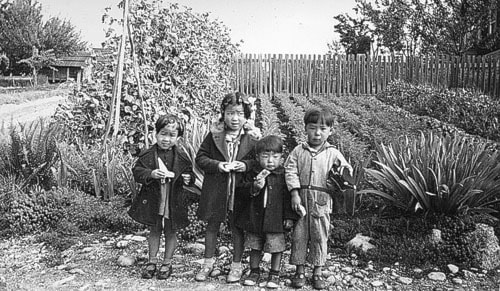Japanese Canadians: the Destruction of a Community in Democratic B.C. is the title of a talk to be given by David Giesbrecht to the Maple Ridge Historical Society on May 26.
All are invited to St. Andrew’s Heritage Church, 22279 – 116th Avenue at 7.30 p.m. For non-members the cost is $2.00, refreshments included.
Giesbrecht is a historian noted for his writings and talks on settlements by various populations in the Fraser Valley. This particular topic is of special interest to Maple Ridge residents because of the significant contributions of early and later Japanese in our area. Farming and fishing were mainstay activities of theirs that helped to build our community.
On Dec. 7, 1941 Japan entered the Second World War by bombing Pearl Harbor’s American military base on Oahu, Hawaii. The U.S., of course, immediately entered the war too, and soon the Canadian government was implementing a plan to systematically move away 22,000 Japanese Canadians living near the coast, and subsequently confiscate their properties.
By Jan. 14, 1942, various levels of government, including municipal ones, had agreed, despite of many reports to the contrary, that the Japanese in Canada, and particularly on the West Coast, were a threat to the country. All men of military age were to be sent away from the coast and interned.
Strangely, members of other hostile nations such as Germany were not affected.
Many of these same Japanese stemmed from 1920s immigration, and they and their descendants had established farms, businesses and more importantly, fishing fleets. Known as Issei (second generation Canadians), they had not been allowed to become Canadian citizens. And because they were generally successful entrepreneurs, they aroused the hostility, often also racially motivated, of the competitors in their fields. Eventually even Japanese with Canadian citizenship were interned, followed by all women and children of Japanese descent.
How did all this affect Maple Ridge’s Japanese community? In the chapter “The Strawberry Capital” in Maple Ridge and Pitt Meadows (available in book stores and through the museum), the author, Donald Waite, describes the experiences of the earliest settlers, beginning in 1906, who came to British Columbia to escape the hardships of their homeland, and who stayed to support the allied forces against Germany in the First World War, later joining in the Maple Ridge Armistice Day celebrations. But it wasn’t long before anti-Asian sentiments were instrumental in forming groups such as the White Canada Association.
In Maple Ridge, there was resentment because the successful Japanese strawberry industry could beat the competitors, who claimed the Japanese had a lower standard of living and used cheap family labour. Pearl Harbour inflamed already tense relations and local Japanese were subjected to arbitrary searches for dangerous goods. When later their properties were expropriated, the farms and fish-boats were sold well below their value, as were auctioned off goods and implements.
Maple Ridge Japanese were not allowed to return home until 1949. Not until the 1980s did their descendants start to seek redress for these injustices.
Please join us on May 26 to hear all about this fascinating issue.
Carla Reed, Maple Ridge Historical Society.
